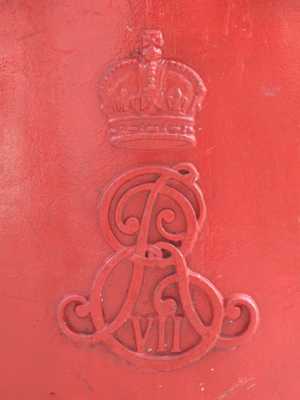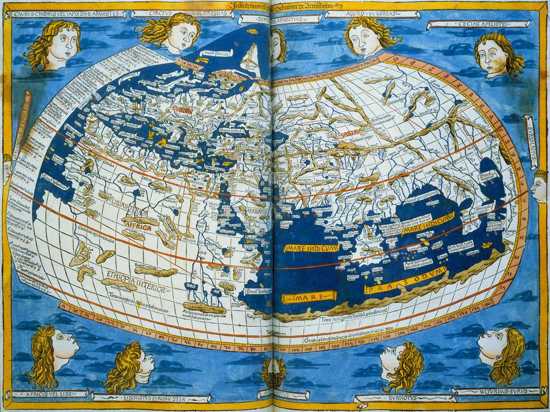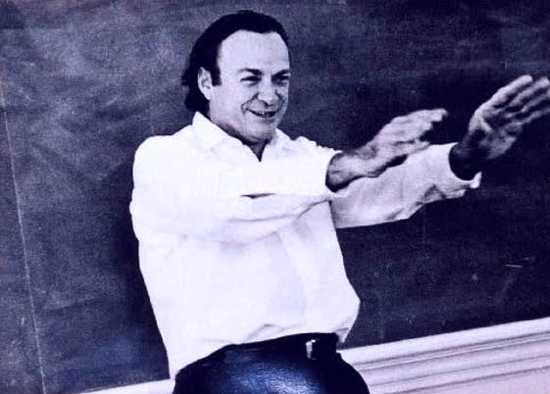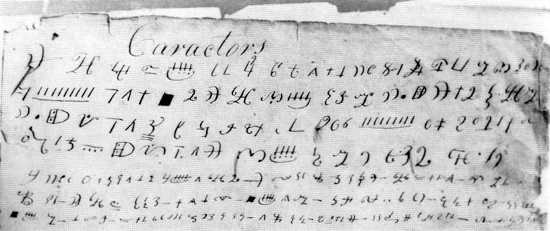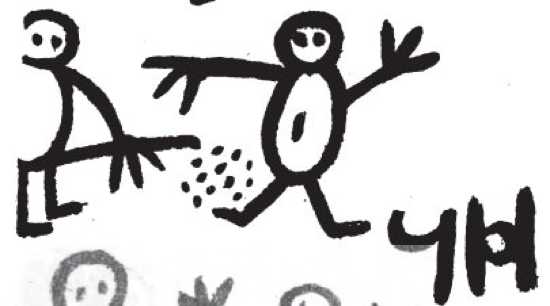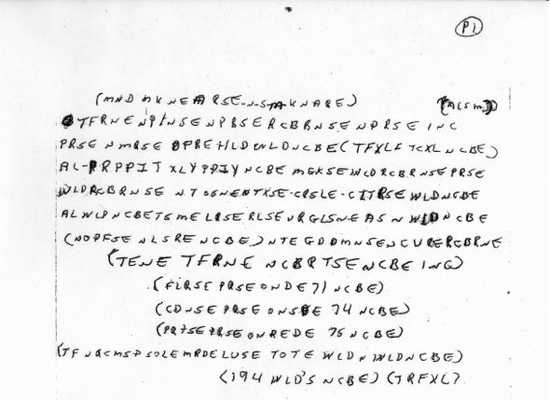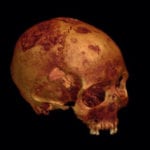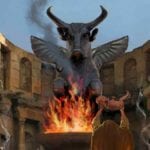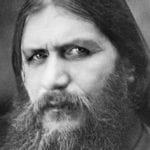Maps, languages, codes and ciphers are cracked and deciphered all the time, sometimes after years of painstaking research and calculations. A recent development is in the use of computers to decipher previously unknown and unintelligible languages. One recent success was the decoding of the Copiale Cipher, a hand-lettered 105-page manuscript that appears to date from the late 18th century. According to a recent New York Times article, the deciphering of the first 16 pages shows the Copiale Cipher appears to be a “detailed description of a ritual from a secret society that apparently had a fascination with eye surgery and ophthalmology.” The now deciphered text talks about making mystical signs and plucking a hair from a candidate’s eyebrow, and swears candidates to loyalty and secrecy. Here are ten more mysterious ciphers, maps and languages.
In the British Library there are at least three books/manuscripts that are written entirely in cipher. The first is titled “The Subtlety of Witches,” authored by Ben Ezra Aseph, from 1657. The second has the very interesting (and long) title of: “Order of the Altar, Ancient Mysteries to Which Females Were Alone Admissible: Being Part the First of the Secrets Preserved in the Association of Maiden Unity and Attachment,” from 1835. The third has the very mysterious sounding title of: “Mysteries of Vesta,” possibly from 1850. So all you ciphers with access to the British Library – get cracking!
The recent discovery of a 400-year old letter written by an unknown Spanish author has revealed a previously unknown Peruvian language. The letter was found in the ruins of an ancient Spanish Colonial church in El Brujo, in northern Peru in 2008, but only now have linguists realized the writing on the letter holds the clues to an entire new language. Written on the opposite side of the letter are notes which appear to be translating the unknown language into the Spanish language and Arabic numerals. Though the new language may be borrowing from the Quechua language still spoken by indigenous people of Peru to this day, it is clear that it is an entirely new and unknown language. It is possible the language is one of two mentioned in contemporary texts – either “Quingnam” or “Pescadora” which means “language of the fishers.” The language is probably based on the Inca culture, since the translated numerals indicate they were using a ten-based number system (Mayans used a twenty-based number system). It is also possible the two are, in fact, a single language, and the clues on the envelope may help linguists and scholars translate the heretofore unknown language.
Not actually a code or cipher but a similar mystery that needed to be “decoded” to answer a historical mystery of where ancient German towns, that must have been encountered by the Romans, were actually located (in comparison to modern German towns and geography). The Romans encountered plenty of Germans and noted this often, but where were the towns where the Romans met the Germans while the Romans were in Germany? This remained a mystery as no one was able to match up the 96 towns listed on a historic map of Germany with a modern map. The famous 2nd Century Greek, Claudius Ptolemy, included a map of ’Germania Magna’ in his Geographia. In AD 150, Ptolemy decided to invent the first Google Earth and created 26 maps in colored ink on animal hides that he said depicted the then known world. Though he never visited Germany himself, Ptolemy must have used other accounts and documents to draw his map. So there is a map, but no one could match the accounts of the Romans and the 96 towns Ptolemy marked on his map, to actual German towns and cities of today. That is, until now. After working for six years, a Berlin-based team of academic surveyors and mappers now claim to have finally worked out how to remap Ptolemy’s 96 German town coordinates onto actual coordinates. What made this possible was the dramatic discovery in the Topkapı Palace library in Istanbul, Turkey of an earlier copy of Ptolemy’s Geographia. The newly discovered map, for example, shows a large number of cities such as the eastern German city that is now called Jena, which Ptolemy called “Bicurgium.” The modern German town of Essen was called “Navalia” and the town of Fürstenwalde in eastern Germany appears to have existed 2,000 years ago and was called “Susudata,” a word derived from the Germanic term “sustain,” or “sow’s wallow.” This is the only example in this list that appears to have been completely solved.
In the very early days of the Internet, way back in 1987, (before some readers were born) someone who claimed to be a graduate student of the brilliant physicist Dr. Richard Feynman, posted a message to an internet cryptology list, saying that Professor Feynman was given three samples of code by a fellow scientist at Los Alamos, who challenged Feynman to decipher them. The person who posted this claimed he was shown the ciphers by Feynman. Feynman could not crack them, or so the poster claimed. So the graduate student posted them on the Internet, hoping others could. Soon after they appeared, one of the three was decoded by John Morrison of the Jet Propulsion Laboratory (JPL). It turned out to be a coded version of the opening of Chaucer’s Canterbury tales in Middle English. The other two remain unsolved. You can see the actual ciphers here.
Just what are the mysterious “Caractors” that make up the Anthon Transcript? The answer to that question might solve whether or not a central point of the Mormon religion was “proven.” The Anthon Transcript is, in fact, a small piece of paper that is reputed to be in the handwriting of Joseph Smith, Jr., the founder of the Mormon religion. On the paper, it is claimed, are several lines of the actual characters Smith saw on The Golden Plates (the ancient record from which Smith claims to have translated the Book of Mormon) – specifically the Reformed Egyptian writing that was on the plates that Smith discovered, and which were revealed to him in 1823. The papers get their name from the fact that, in 1828, the paper was delivered to Charles Anthon who was, at the time, a well-known expert of classical writing at Columbia University, so that he could authenticate and translate the characters. Some believers of the Mormon religion claim that Anthon independently verified the authenticity of the characters in a letter to Martin Harris. Harris was an early convert to the Latter Day Saint movement, and also served as one of Three Witnesses who testified that they had seen the golden plates from which Joseph Smith said the Book of Mormon had been translated. According to Harris, Anthon claimed the writing was Egyptian, Chaldaic, Assyriac, and Arabic, and that they were “true characters.” It was only after Anthon heard that the papers were from Smith and the Mormon religion that Anthon ripped up his certification. Anthon himself denied this and claimed he knew the writing was a hoax all along. So just what are the “Caractors”? According to Anthon, “the marks in the paper appeared to be merely an imitation of various alphabetical characters, and had, in my opinion, no meaning at all connected with them.“ It is possible that the “caractors” are merely random scribbling, but that does not appear to be the case. Most likely, the “caractors” in the Anthon Transcript were borrowed from multiple sources, perhaps a shorthand version of the Bible, with random characters thrown in to give it the appearance of a true language. But then again, it is also possible the “caractors” are what Joseph Smith claimed they were. Until they are translated and deciphered, we do not know.
One of the most fascinating unsolved ciphers may or may not actually be a cipher, but a case of World War II politics. What is known is that the HMAS Sydney was a Royal Australian Navy light cruiser on 19 November, 1941, was involved in a battle with the German auxiliary cruiser Kormoran. The Sydney was a larger, more powerful, and more heavily armed ship, compared to the Kormoran. Yet during the battle, the Sydney was lost with all hands, 645 aboard, while the less powerful ship, the Kormoran, suffered few casualties. The fact that the superior vessel, The Sydney, was defeated by a lesser German cruiser is commonly attributed to the proximity of the two ships during the engagement, and Kormoran’s advantages of surprise and rapid, accurate fire. However, some feel the German commander used illegal ruses to lure Sydney into range, or even that a Japanese submarine was involved. The true events of what happened in the battle between the Sydney and the Kormoran are now believed to be part of an elaborate cover-up. And here is where the Sydney Ciphers come in. The Captain of the Kormoran, Captain Detmers, was captured and sent to an Australian POW camp after the Kormoran was sunk. Years later, in 1945, Detmers tried to escape from the POW camp and was recaptured. When he was caught, he was found to have a diary which appeared to have been written in Vigenere code. Detmer had placed small dots under certain letters in his diary. The diary was forwarded to Australian Cryptanalysis and their analysis indicated that the diary was coded in the easily deciphered Vignere code. The deciphered code, according to the Australian analysis, showed he was trying to hide a description of the engagement between the Sydney and the Kormoran. The problem with this stated position of the Australian cryptographers – why would Detmers use a code everyone knew was already broken and easy to decipher? The mystery deepens when it was later learned that other Australian documents claim the diary was not in Vigenere code, at all, but an unspecified WWII German code. Still another deciphering of the so-called Detmer diary claimed it was coded using a British system called Playfair code, another code which had been broken by 1941. Why, again, would Detmer use an English code which he probably had no knowledge of (and even if he did know the British code, he would also have known it had been broken as far back as WWI). So why use it? Which is it? Did Detmers use the easily broken Vigenere code? Did he use an unknown German code? Or did he use the British Playfair code? One possible answer is that the diary was not encoded by Detmers at all, but instead, by British or Australian authorities who wanted to give it the appearance of being coded. And by using any one of the three mentioned codes, all of which had been broken, anyone who “discovered” Detmers diary would easily be able to break the cipher. Thus, the “decoding” of the document would produce a narrative meant to enforce the British and Australian descriptions of the events that allowed a more powerful warship to be sunk, with total loss of life, by a lesser enemy vessel. So the real mystery of the Sydney Ciphers may be – can they show who created it, and for what purposes?
In 1553, an Italian cryptographer, Giovan Battista Bellaso, published a cryptography manual called “La Cifra del Sig. Giovan Battista Bellaso.” This was kind of an early “Cryptography For Dummies.” He then published two other editions, in 1555 and 1564. It was in these follow-up volumes that Bellaso included some challenge ciphers for readers to try their hand at deciphering. Bellaso wrote of his ciphers: “they [the ciphers] contain some beautiful things that are interesting to know.” Bellaso promised to reveal the contents of these ciphers if no one had deciphered them within a year, something he failed to do. So, the seven challenge ciphers remained unbroken until a reclusive Englishman named Tony Gaffney succeeded in cracking one of them, in 2009. What he found is that the cipher reveals an unexpected link with Renaissance astrological medicine. His achievement is all the greater given that he cannot read Italian. Gaffney then followed up this amazing act by cracking Ballaso’s cipher #7. This was even more remarkable because cipher #7 was a completely different type used by Bellaso. As far as I was able to determine, the other five Bellaso ciphers remain unbroken.
Emmanuel-Henri-Dieudonné Domenech was a French abbé, missionary and author who answered the call for the need to develop the Catholic Church in Texas, in 1846, and shipped off to America. He first went to St Louis, completed his theological studies, then went to Castroville, Texas, then back to France where he met the Pope, then back to Texas where he landed in Brownsville during the time of the Mexican-American war. He then returned to France, back to Mexico, back to Europe (returning one more time to America, in the 1880s) and spent the remaining years of his life as kind of an ecclesiastical travel author. Perhaps it was from too many Atlantic crossings or too much time in Texas, but Domenech produced a very odd and mysterious document that was rediscovered in the Bibliotheque de l’Arsenal in Paris. The book, known as “Le Livre des Sauvages” was, according to Domenech, not his work but a work of Native Americans – a kind of curious Native American document. This was quickly proven to be not the case, by German critics who noted many uses of German language words and characters in the text. But the book had more – strange drawings. These German critics thought the curious doodling and pictures, unknown symbols, and mysterious drawings in the text were just the random scribblings of a child. But the stick figure drawings appear to be the work of an adult, specifically, a very sexually troubled adult. The drawings and figures are, to say the least bizarre. You can see some examples here. There are several hundred pages of this in the “Le Livre des Sauvages.” However, the figures also include small slices of cipher material that may, or may not, be part of an overall cipher. But would anyone wish to decipher what is being said with such sexual drawings?
On 30 June, 1999, 41 year old Ricky McCormick’s body was discovered in a field in St. Charles County, Missouri. An unemployed high school dropout, McCormick was said to have heart and lung problems, lived on and off with his mother, and was receiving disability at the time of his death. He had served time in jail for multiple offenses. His body was found several miles from where he lived, and there was no indication of foul-play, nor was any cause of death ever established. Found inside his pockets were two hand written notes that appeared to be encrypted. Were the encrypted notes clues to his death? The FBI’s Cryptanalysis and Racketeering Records Unit (CRRU) and the American Cryptogram Association both tried, and failed, to decipher the meanings of the notes. The notes and the death of Ricky McCormick are listed as one of the CRRU’s top unsolved cases. Twelve years later, the FBI had changed its mind and now believed McCormick may have been murdered. They also believed whatever was written on the notes might explain his death and lead to the killer, or killers. On 29 March, 2011, the FBI asked the code-breakers of the world to help determine the meaning of the coded messages. Within days of posting the messages on the Internet, the FBI website was inundated with messages from the public offering ideas, suggestions and assistance. According to members of McCormick’s family, McCormick had used encrypted notes since he was a boy, but apparently no one in his family ever knew how to decipher the codes. Now it is up to the public to try to help the FBI decode these notes.
One fascinating example of an unknown language, that mystifies those who try to understand and decipher it, is unique in that only two people speak it. Cryptophasia is a peculiar phenomenon of a language developed by twins (identical or fraternal) that only the two children can understand. The word has its roots from crypto meaning secret, and phasia meaning speech disorder. Most linguists associate cryptophasia with idioglossia, which is the same, but cryptophasia also includes mirrored actions like twin-walk and identical mannerisms. Little is known about cryptophasia. Once thought to be a rare phenomenon, it is now understood that cryptophasia is far more common – possibly occurring in up to 40% of twins. These autonomous languages are unintelligible to others and can only be understood by the other twin. Though cryptophasia is common, the unique language the twins invent soon disappears as they age. It appears the twins adopt from, or utilize, an adult language, but only partially. Often this happens when an adult is not frequently in contact with the children. Typically, two or more siblings (usually twins but not always) grow up together during the language acquisition phase and model, or acquire, the adult language imperfectly. If the adult model is frequently absent, then the children use each other as models. It does not appear the children are inventing their own language, though they do create their own words. It appears they incorrectly model the fragmented exposure to adult language, utilizing the limited and constrained phonological possibilities of young children. These words being hardly recognizable, the language may turn out to be completely unintelligible to speakers of the model languages. The best known examples of twin language occurred with Poto and Cabengo – identical twins (real names Grace and Virginia Kennedy, respectively), who used a language unknown to other people until the age of about eight. Poto and Cabengo is also the name of a documentary film about the girls, made by Jean-Pierre Gorin, and released in 1979. They were apparently of normal intelligence. They developed their own communication because they had little exposure to spoken language in their early years.
